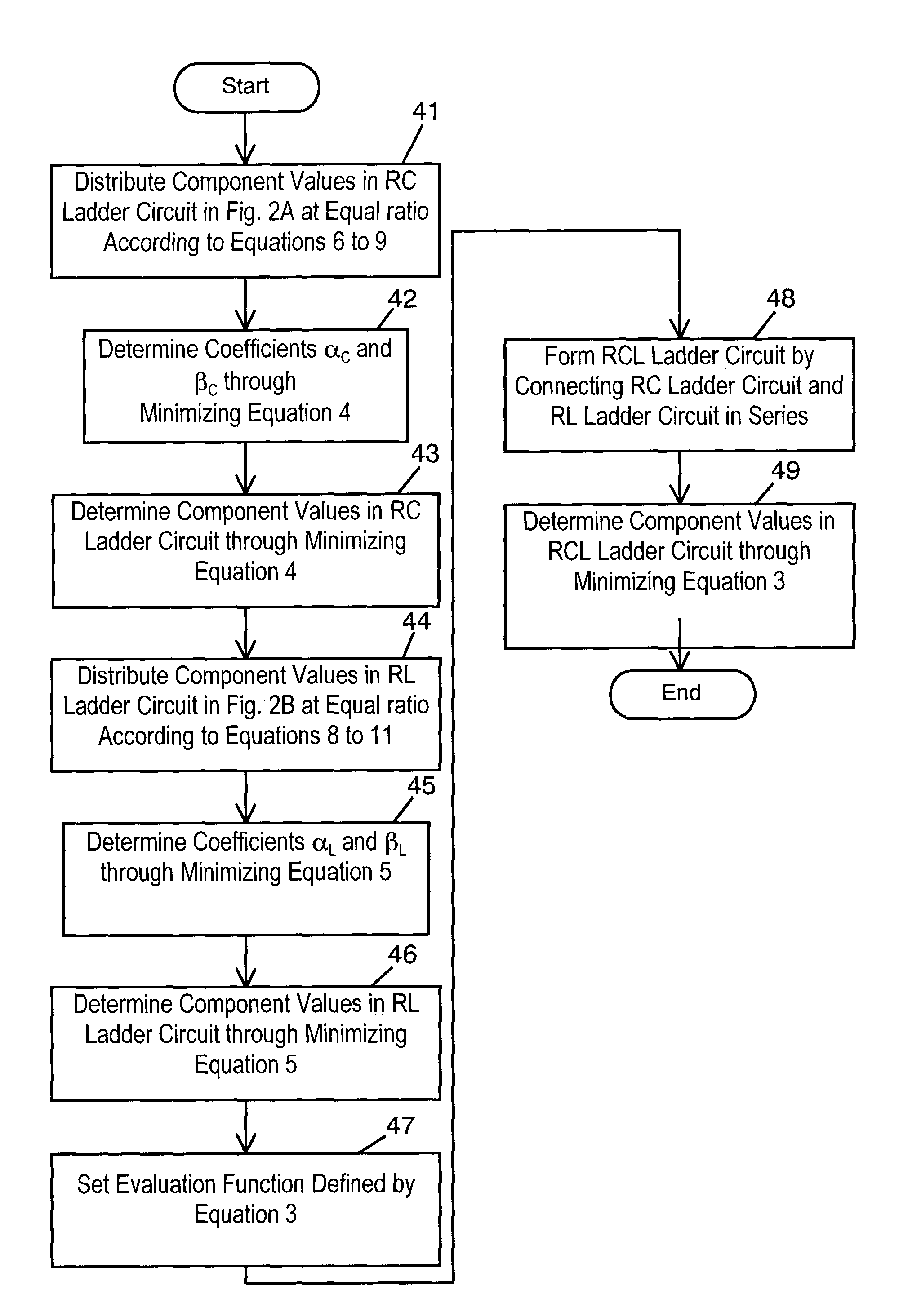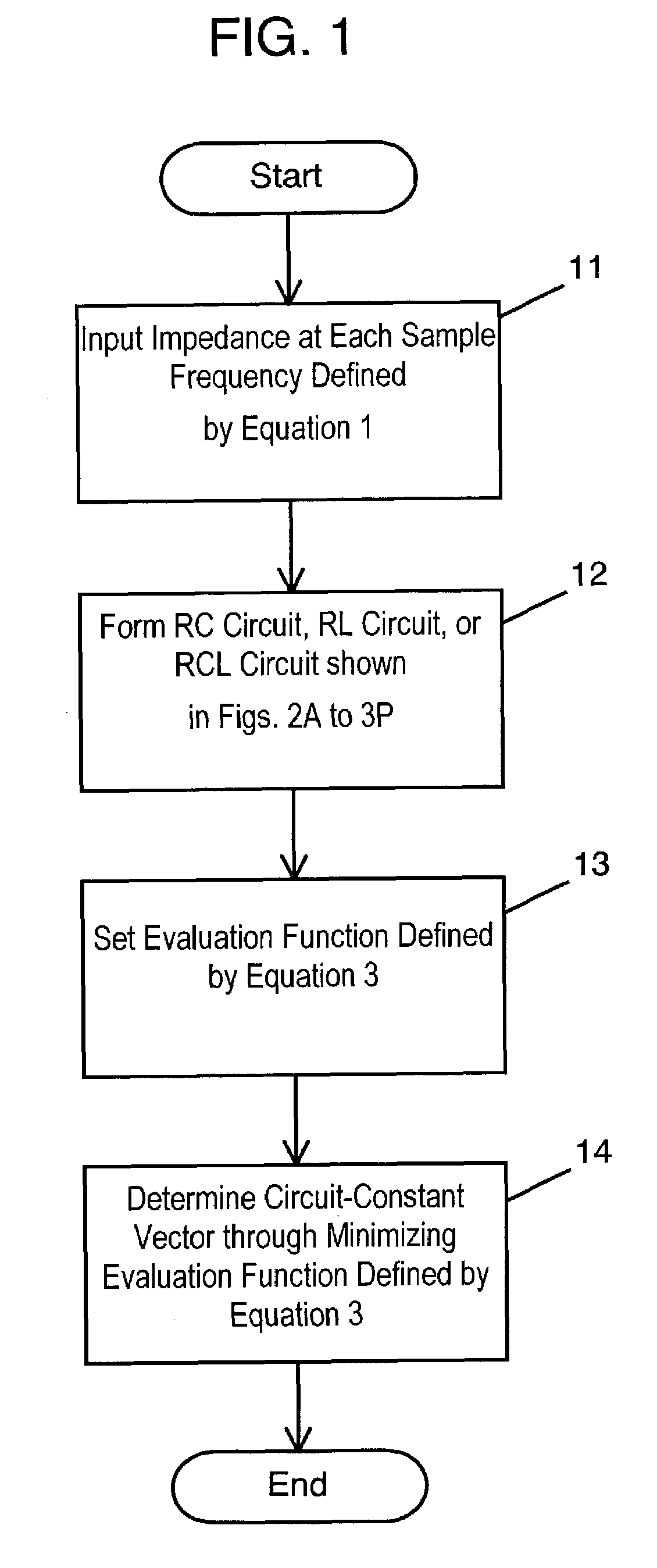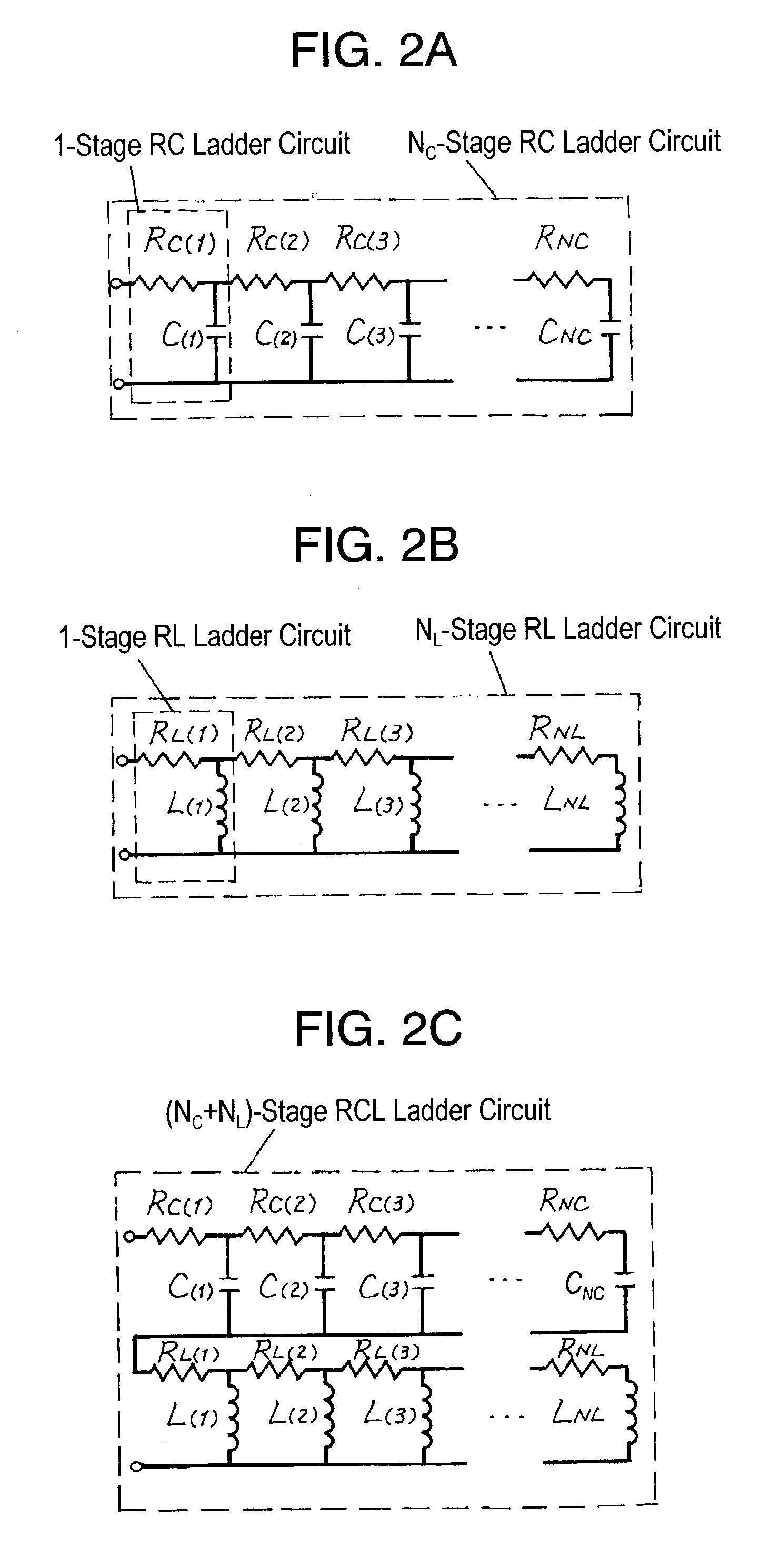Method for making equivalent circuit model of passive element, simulator, and storage medium
a technology of equivalent circuit model and simulator, applied in the field of deriving equivalent circuit model of passive components, can solve the problems of difficulty in estimating the electric characteristics of a complicated electronic circuit, the efficiency of electronic circuits using circuit simulators, and the inability to meet the requirements of electrical characteristics
- Summary
- Abstract
- Description
- Claims
- Application Information
AI Technical Summary
Benefits of technology
Problems solved by technology
Method used
Image
Examples
exemplary embodiment 1
[0042]FIG. 1 is a flowchart of processes in a method for deriving an equivalent circuit model of a capacitor according to an exemplary embodiment. Impedances as sampled values for frequencies shown by equation 1, which will be described later, are provided. (Step 11). Using frequency-independent resistance (R), capacitance (C), and inductance (L), one of an RC circuit consisting of the resistor and the capacitor, an RL circuit consisting of the resistor and the inductor, and an RCL circuit consisting of the RC circuit and the RL circuit connected in series is formed as an equivalent circuit model representing a circuit enabling a simulation in a time domain (step 12). An evaluation function defined by equation 3, described later, is set with equations 1 and 2 (step 13). A circuit constant vector is determined by minimizing equation 3 (step 14).
[0043]FIG. 2A through FIG. 2C show circuit diagrams of the equivalent circuit models of a capacitor according to the embodiment. FIG. 2A illu...
exemplary embodiment 2
[0088]In a method of deriving an equivalent circuit model of exemplary embodiment 2, an RCL circuit is formed as an equivalent circuit model wherein the real part R(fn) of impedance becomes minimum value R0 at sample frequency fm(fm≠f1 and fm≠fn), in step 12 of exemplary embodiment 1, and evaluation function in a low frequency region fm+1≦fn≦fm is calculated according to:
[0089]A(P->)=∑n=1Na(RM(fn,P->),XM(fn,P->),R(fn)-xR0,X(fn))(Equation4)
where (0≦x≦1), instead of the evaluation function defined by equation 3 in step 13. Further, factors x and d are set as x=½ and d=2 in calculation of evaluation function in a high frequency region fm+1≦fn≦fN according to
[0090]B(P->)=∑n=1Nb(RM(fn,P->),XM(fn,P->),R(fn)-(1-x)R0,X(fn))(Equation5)
where 0≦x≦1. That is,
[0091]A(P->)=∑n=1ma(RM(fn,P->),XM(fn,P->),R(fn)-R0 / 2,X(fn)),a(RM,XM,R,X)=cRRM-(R-R0 / 2)2Rd+cXXM-X2Xd+cZZM-Z2Zd,B(P->)=∑n=m+1Nb(RM(fn,P->),XM(fn,P->),R(fn)-R0 / 2,X(fn)),andb...
exemplary embodiment 3
[0092]An RC circuit is formed as an equivalent circuit model in which a real part R(fn) of impedance becomes minimum value R0 at sample frequency of fm (fm=fN) in step 12 of embodiment 1, and an evaluation function in an entire frequency region f1≦fn≦fN is calculated according to:
[0093]A(P->)=∑n=1Na(RM(fn,P->),XM(fn,P->),R(fn)-xR0,X(fn))(Equation6a)
where 0≦x≦1, instead of the evaluation function in step 13. A new RC circuit is then completed by connecting additionally a resistance xR0 in series to the above RC circuit.
PUM
 Login to View More
Login to View More Abstract
Description
Claims
Application Information
 Login to View More
Login to View More - R&D
- Intellectual Property
- Life Sciences
- Materials
- Tech Scout
- Unparalleled Data Quality
- Higher Quality Content
- 60% Fewer Hallucinations
Browse by: Latest US Patents, China's latest patents, Technical Efficacy Thesaurus, Application Domain, Technology Topic, Popular Technical Reports.
© 2025 PatSnap. All rights reserved.Legal|Privacy policy|Modern Slavery Act Transparency Statement|Sitemap|About US| Contact US: help@patsnap.com



